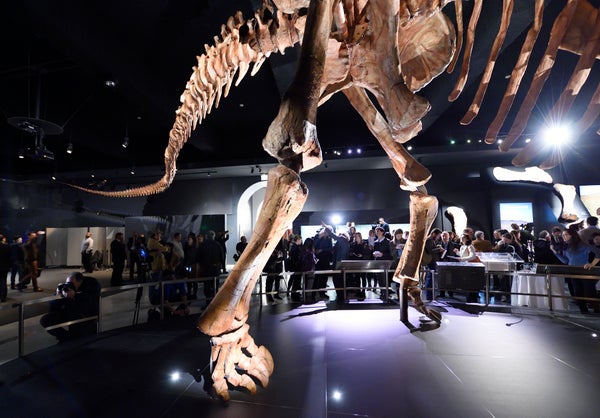Titanosaurs—The Biggest Land Animals in Earth’s History—Thrived by Combining Reptilian and Mammalian Traits
The secret to titanosaurs’ remarkable biological success may be how they merged the best of both reptilian and mammalian characteristics to form a unique way of life
The Titanosaur, the largest dinosaur ever displayed at the American Museum of Natural History, is unveiled at a news conference January 14, 2016 in New York.
Don Emmert/AFP via Getty Images
The following essay is reprinted with permission from ![]() The Conversation, an online publication covering the latest research.
The Conversation, an online publication covering the latest research.
You’re probably familiar with classic sauropod dinosaurs – the four-legged herbivores famous for their long necks and tails. Animals such as Brachiosaurus, Apatosaurus and Diplodocus have been standard fixtures in science museums since the 1800s.
With their small brains and enormous bodies, these creatures have long been the poster children for animals destined to go extinct. But recent discoveries have completely rewritten the doomed sauropod narrative.
On supporting science journalism
If you’re enjoying this article, consider supporting our award-winning journalism by subscribing. By purchasing a subscription you are helping to ensure the future of impactful stories about the discoveries and ideas shaping our world today.
I study a lesser known group of sauropod dinosaurs – the Titanosauria, or “titanic reptiles.” Instead of going extinct, titanosaurs flourished long after their more famous cousins vanished. Not only were they large and in charge on all seven continents, they held their own amid the newly evolved duck-billed and horned dinosaurs, until an asteroid struck Earth and ended the age of dinosaurs.
The secret to titanosaurs’ remarkable biological success may be how they merged the best of both reptile and mammal characteristics to form a unique way of life.
Moving with the continents
Titanosaurs originated by the…
Read the full article here







